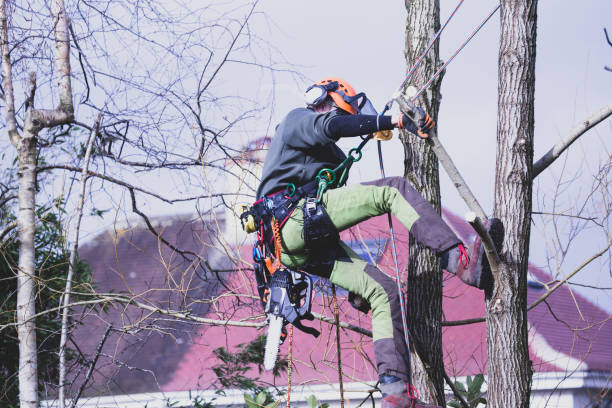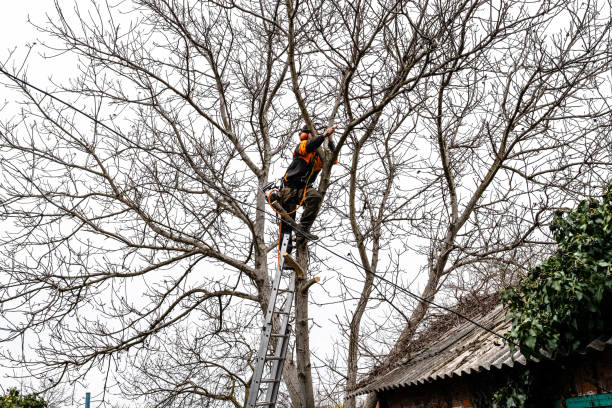Trees provide a myriad of benefits to homes including shade, wind protection and wildlife habitat. However, a tree that becomes a safety hazard to people and structures should be removed as soon as possible.
There are several things that can indicate when a tree should be removed including damage or disease and its proximity to a structure. Many of these problems aren’t obvious to the untrained eye, but a trained arborist can recognize them early on.

Dead Branches
Dead branches aren’t just unattractive to look at, they can also compromise the stability of the tree and pose a serious falling hazard during adverse weather conditions. As such, they should be removed from a tree as soon as possible. But removing dead branches isn’t as simple as it sounds. Improper techniques can lead to structural imbalances and further damage the tree.
To identify a dead branch, arborists in Melbourne’s northern suburbs can check for signs of decay such as the presence of fungi (e.g. wood conk), twigs and dead leaves that refuse to fall off the branch, and a greyish color of the twigs or branches. In some cases, the branch might show a crack or break near the trunk of the tree.
A dead branch can also be identified by checking the cambium layer of the branch to see if there’s wet tissue. A wet cambium layer indicates that the branch is alive, but if it’s brown or dry, then the branch is dead.
If a dead branch is located over a driveway, shed, garage or house, it should be removed as soon as possible to prevent potential damage during bad weather. However, be careful not to prune too much of a living branch during this process as it may impact or impede regrowth. Also, make sure that you’re not removing branches nestled inside the tree as this can cause severe damage and structural imbalance.
Leaning Trunk
Trees that are leaning toward a home should be removed because they can cause damage when they fall. These types of trees often catch powerlines and can bust through windows or siding on a home. They can also cause injury to people or pets when they fall on them. It’s important to be prepared to take these down by having the necessary equipment, including a tripod or extension ladder, chainsaw, rope then a reciprocating saw.
Depending on the severity of the lean, it may be possible to save a tree by removing only the branches that are touching a structure or people. This way, the rest of the tree can stay upright, and the weight of the branches will be distributed more evenly.
On the other hand, if the trunk is showing signs of significant decay or damage, it isn’t safe to leave a leaning trunk standing. Hollow spots, vertical cracks, old wounds, and dead branch stubs are all indications that the trunk is compromised and needs to be removed.
Eltham tree removal can inspect the trunk and roots of a leaning tree to determine if it is safe to remain. If the tree is severely damaged, it should be removed immediately to prevent injury and property damage. To prepare the tree to be felled, a notch must be cut on the side of the trunk that will face the ground. This notch should be made at a comfortable highlight, typically around knee height.

Disease
Arborists are trained to recognize tree diseases, and know when they need to remove a tree. They can prune the diseased tree to improve structure and reduce safety risks, and use proper techniques to prevent diseases or pests from spreading to other trees on your property.
Fungal diseases like tar spot and powdery mildew are unsightly, but they typically do not pose major health threats. These fungi thrive in conditions that make it difficult for the leaves of a tree to photosynthesize, so regular care and good watering practices are usually enough to control them.
Fungi also invade trees through wounds created by pruning or construction activities. When this happens, the fungi can begin the decay process that ultimately kills the tree. If you see a mushroom-like growth known as a conk on the trunk of your tree, it is a sign that the tree is dying and needs to be removed.
Planting new trees or shrubs is a big job that requires a lot of thought and planning. An arborist can help you select the right species for your environment and recommend proper planting methods. They can also provide expert emergency tree care in storms, when a tree is damaged or has fallen completely.
Infestation
There are many different kinds of pests that can damage or even kill a tree. Some suck fluid from the leaves or twigs; others bore into the trunk or roots; and still others chew the foliage or fruit. A healthy tree may be able to bounce back from an occasional attack by these pests, but repeated infestations can wreak havoc and weaken the entire structure.
The early signs of bug infestation are easy to spot if you watch closely. Look for skeletonized or discolored leaves and irregular patterns of holes, notches, or missing sections. Also check for wilting, stunted growth, and premature leaf drop.
Insect infestations are often the result of stress on a tree, so take care not to jump to conclusions when you see early symptoms. A professional arborist will be able to provide the best treatment solution.
An arborist is a tree expert who understands how trees work, the needs they have for good health and the impact they can have on people, property and the environment. They can assist in planting, transplanting and pruning trees; installing structural support systems; diagnosing and treating phytopathology or parasitism; preventing or interrupting predation and grazing; and removing vegetation deemed as hazardous, invasive species or disease vectors. emergency tree removal can work from the ground or with specialized vehicles and ropes, harnesses and climbing equipment to access treetops.